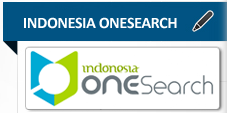STUDI FENOMENOLOGI : KEBUTUHAN PENDIDIKAN KESEHATAN PADA PASIEN FRAKTUR EKSTREMITAS ATAS
Abstract
Abstract
Broken bones or fractures are sudden situations where the client or family has no preparation to deal with the conditions that are happening. Fractures will have an impact on both the client and the family, for this reason the problems in cases of extremity fractures need to be studied further, so that they can provide an explanation regarding prevention or protective measures for extremity fracture clients and their families. In fact, there is no instrument that can identify the needs and learning characteristics of clients with upper extremity fractures. Existing instruments are in the form of assessment forms and general patient and family education plans that are used for all hospitalized patients with various cases. This study aims to explore the need for health education in upper extremity fracture patients. This study uses a qualitative research design with a phenomenological approach. Data collection was obtained by means of in-depth interviews. Participants were 5 patients with upper extremity fractures. Content validity test by 2 experts and 3 hospital practitioners. The analysis was carried out using the Colaizzi method. From the research results identified six main themes: (1) Perceived obstacles, (2) Perceived benefits of action, (3) Confidence, (4) Situational influence, (5) Interpersonal influence, (6) Commitment to plan an action. Results The content validity of each of the 28 items resulted in a Vaiken index value > 0.80. This shows that all of the assessment instruments developed in this study in terms of their contents can measure what should be measured. Therefore, all of the instruments can be said to be feasible to use or be tested on respondents in order to obtain empirical evidence of the quality of the instrument.
Keywords: Extremity Fracture, Needs, Health Education
Full Text:
PDFReferences
Abdul, W. (2013). Asuhan Keperawatan Dengan Gangguan Sistem Muskuloskeletal. CV.Trans Info Media.
Alligood, M. R. (2017). Pakar Teori Keperawatan. Elsevier.
Audige, L. et al. (2005). A Concept for the Validation of Fracture Classifications. J Ortho Trauma.
Carpenito, L. (2000). Diagnosa Keperawatan. Buku Kedokteran EGC.
Djamal, R., Rompas, S., dan Bawotong, J. (2015). Pengaruh Terapi Music Terhadap Skala Nyeri pada Pasien Fraktur di Irina A RSUP Prof. R.D. Kandou Manado. E-Journal Keperawatan (EKp), 3, 1–6.
Helmi. (2012). Buku ajar gangguan muskuloskeletal. Salemba Medika.
Ignatavicius, D.D., & Workman, M. L. (2013). Medical Surgical nursing: patient centered collaborative care, 7 th edition. USA: Saunders Elsivier.
Johansson, K.,Nuutila, L.,Virtanen, H.,Katajisto, J.,Salantera, S. (2005). Preoperative education for orthopaedic patients: systematic review. Journal of Advanced Nursing, 50(2), 212–223.
KARS. (2018). Standar Nasional Akreditasi Rumah Sakit Edisi 1. Komisi Akreditasi Rumah Sakit.
Kemenkes RI. (2018). Peraturan Menteri Kesehatan Republik Iindonesia Nomor 4 Tahun 2018 Tentang Kewajiban Rumah Sakit dan Kewajiban Pasien (Vol. 151, Issue 2).
Kozier, B. (2010). Buku Ajar Fundamental Keperawatan. EGC.
Margaret, M. C. R. (2015). Asuhan Keperawatan Medikal Bedah Dan Penyakit Dalam. Nuha Medika.
Mediarti D, Rosnani, & S. S. (2015). Pengaruh Pemberian Kompres Dingin Terhadap Nyeri pada Pasien Fraktur Ekstremitas Tertutup di IGD RSMH Palembang Tahun 2012.2015.
Meyers, K., Rodriguez, K., Brill, A. L., W., Y., La Mar, M., Dunbar, D., Golub, S., & A. (2017). Lessons for Patient Education Around Long-Acting Injectable PrEP: Findings from a Mixed-Method Study of Phase II Trial Participants. AIDS and Behavior.
Notoatmodjo, S. (2007). Promosi Kesehatan & Ilmu Perilaku. Rineka Cipta.
Nursalam, & Efendi, F. (2008). Pendidikan Dalam Keperawatan. Jakarta. Salemba Medika.
Orem, D. . (2001). Nursing concepts of practice,. Mosby Harcourt Sciences Company.
Price, S.A., & Wilson, L. . (2006). Patofisiologi konsep klinis proses-proses penyakit. EGC.
rgardt, N. & Stenstrom-Kyobe, C. (2014). Nursing panorama of patients with musculoskeletal injuries in Uganda using NANDA and NIC: an observational study. The Red Cross University Collage.
Ropyanto CB, Sitorus R, & E. T. (2013). Analisis faktor- faktor yang berhubungan dengan status fungsional paska open reduction internal fixation (ORIF) fraktur ekstremitas. Jurnal Keperawatan Medikal Bedah., 1, 81–90.
Smeltzer, S.C., & Bare, B. G. (2004). Textbook of medical surgical nursing. 10ed. Philadelphia : Lippincott Williams & Wilkins.
Tomey, A. M. (2006). Nursing Theorists and Their Work. St;Louis : Mosby.
Trisnowati, H. (2018). Perencanaan Program Promosi Kesehatan. Anggota IKAPI.
Wong, E.M. -L., Chan, S.W. -C. & Chair, S.-Y. (2010). The effectiveness of educational intervention on pain beliefs and postoperative pain relief among Chinese with fracture limbs. Journal of Clinical Nursing.
DOI: https://doi.org/10.26751/jikk.v14i2.2062
Refbacks
- There are currently no refbacks.
Universitas Muhammadiyah Kudus - LPPM Universitas Muhammadiyah Kudus
Jl. Ganesha 1 Purwosari Kudus 59316
Tel/ Fax +62-291-437218 Email : [email protected]
Jurnal Ilmu Keperawatan dan Kebidanan Indexed by:

This work is licensed under a Creative Commons Attribution-ShareAlike 4.0 International License.













